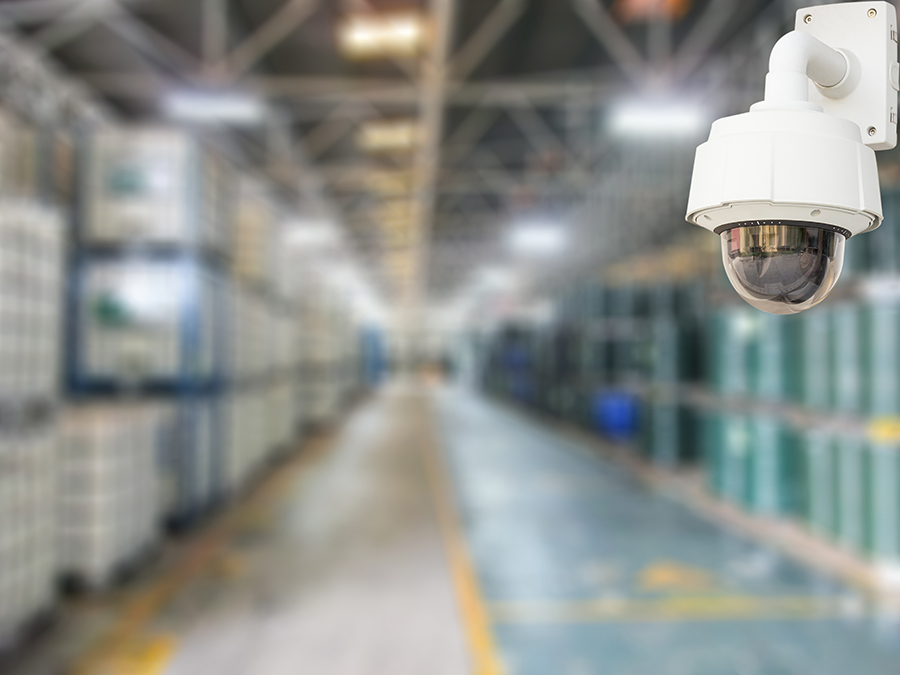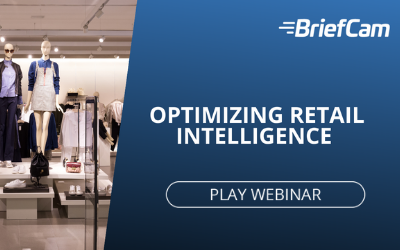The Health and Safety Benefits of Video Surveillance and Analytics in Warehouses and Production Facilities

Mitigating Worker Safety and Health Risks
Warehouse workers face an increasing variety of safety risks on a daily basis: From slips, trips, falls, entanglements, chemical spills, to muscle strains and fatigue, accidents can and do happen. Some accidents involve heavy / dangerous machinery, such as conveyor belts, stairways, forklifts, and charging stations. Worker safety is of critical concern to warehouse managers for many reasons. Above all, any employer is obligated to ensure the safety and well-being of their employees, but management teams are also committed to maintaining productivity, complying with occupational health and safety standards, and mitigating risks and costs such as worker compensation claims. Toward that end, warehouse managers keep an observant eye on all aspects of a warehouse activities to see that human operators are functioning properly, equipment is maintained, hazards are contained, and safety protocols are followed.
Of course, it is difficult to effectively monitor every area of large and complex buildings containing large numbers of employees, contractors and visitors. For this reason, warehouse managers often deploy CCTV video surveillance cameras, and dedicate security or supervisory staff to view the real-time feeds. Even so, it is still easy to overlook critical incidents or mistakes. Beyond human error and limitations, there are usually not enough staff to constantly monitor every video camera feed. These CCTV cameras collect volumes of footage and untapped data, capture trends and norms that; if properly analyzed – could provide valuable intelligence for optimizing safety and security, as well as operational efficiency.
Leveraging Video Analytics to Spot Unsafe Practices
To drive surveillance and security efficiency, an increasing number of warehouses now use AI-driven video content analytics software. These technologies identify, classify and index objects in surveillance video footage for searchable, actionable and quantifiable data mining possibilities. Powered by Deep Learning, video content analytics software empowers human operators to identify normal behavioral trends vs. abnormalities and anomalies through configurable alerts for exceptional behavior requiring closer investigation. Operators are able to create customized real-time alerts that are triggered when an anomaly occurs.
Tracking Employee Compliance with Safety Regulations
For example, if employees are required to wear hard hats in certain areas; a video analytics system can be configured to detect and alert when violations are committed. In environments where employees need to navigate stairways operators can trigger alerts when humans are detected in areas of the stairwell far enough away from the handrail that it’s reasonable to suspect they are not using it. With real-time alerts, the security and safety operators can more proactively monitor and instill safe habits and behaviors.
Detecting Health and Safety Hazards
Video intelligence software can also detect other safety hazards, such as when employees enter a vehicles-only area, or vice versa. For example, if an employee moves items from a shelf and places the on the floor in an aisle, or moves some pallets into an aisle, the analytics system can detect an object dwelling in an area meant to be open and send an alert. While this seems very basic, heightened situational awareness of hazards like these can make a significant difference in proactively preventing accidents and injuries on the job.
Communicable diseases in the workplace have not been a significant health and safety concern in the past but – especially during the current COVID-19 outbreak – warehouse management is even more sensitive to the risk of contagion and serious health threats to employees. During the Coronavirus pandemic, and even as restrictions are gradually lifted, warehouse managers can apply video content analytics to ensure that employees are practicing social distancing and mitigating infection risks. People Counting alerts enabled by video intelligence software make it possible to seamlessly track the number of objects or people in a pre-defined area and trigger alerts when pre-defined count thresholds are exceeded.

In cases where an employee has already contracted a transmittable disease, and discloses such information to his/her employer, the warehouse management can leverage facial recognition and intelligent video search to understand the specific employee’s whereabouts on site and the objects and people with whom he/she came into contact during the contagious period prior to his/her diagnosis.
To do so, the employer would look to conduct a filtered search across footage from multiple CCTV cameras based on a digital image of the employee. This would provide visibility of all instances of employee appearances during the defined time. The employer is then positioned to responsibly notify any co-workers that have been in contact with the infected person, to ensure that these employees can safely observe a recommended self-quarantine period. This process can be accomplished without even having to reveal the identity of the ill employee – protecting the privacy of the individual and the ongoing safety of all employees and their families. It can also help direct disinfection efforts to ensure that areas where the ill employee interacted are carefully cleaned to prevent further exposure.
Improving Response Time by Increasing Situational Awareness
Being aware of situations as they unfold is crucial for physical security. When any medical incident occurs in a warehouse, it’s critical that management are made aware immediately so a suitable response is enacted with the required medical assistance. A video analytics system can detect unusual dwell times in a particular area or camera view, and can be configured to alert operators when a person dwells or stays in the frame of a video camera for longer than a normal time. For example, if a worker has fallen down due to illness or injury, the system can detect that the person has dwelled in one spot for an unusual amount of time, and invoke a real-time alert to management for assessment of the situation and enable tangible decisions to be immediately implemented.
Company safety officers and warehouse managers have a plethora of reasons to identify safety hazards, prevent accidents, injuries, or illness, and respond quickly when such incidents occur; video intelligence software enhances their ability to do so. Because many warehouses already deploy CCTV cameras, it makes sense to maximize the investment in these technologies by implementing video content analytics. There is priceless value and considerable time and money savings in leveraging technology to instill good safety habits and respond quickly to hazards or incidents.